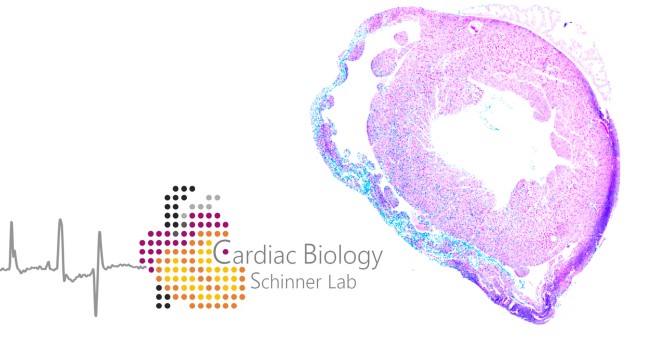The Schinner lab
How do Cardiomyopathies develop?
Cardiomyopathies caused by genetic mutations are a significant contributor to sudden cardiac death in young adults. In the Schinner lab, our primary objective is to comprehend the factors that underlie the development of genetic cardiomyopathies, specifically focusing on Arrhythmogenic Cardiomyopathy.
Through a series of targeted disease model systems that span from cell culture approaches to in vivo models, we strive to elucidate how mutations can result in arrhythmias, scaring of the heart, and eventual sudden cardiac death. Our research delves into the early processes leading to the pathological phenotype and assesses the therapeutic potential of protective and regenerative mechanisms.
What can we learn for novel therapeutic approaches?
Our lab addresses the various stages of the pathological cascade by:
- Integrating cardiac functional data with spatio-temporal expression patterns to identify causative factors in the development of arrhythmias and cardiac fibrosis.
- Examining the role of specific cell subtypes present in the diseased heart and their potential modulation of the progression of the cardiomyopathy phenotype.
- Assessing the therapeutic potential of compounds that restore defective cell-cell adhesion, building on recent findings highlighting the central role of disrupted intercellular adhesive function in the pathogenesis of Arrhythmogenic Cardiomyopathy ( Schinner et al., Circulation, 2022 ).
Through these projects, our goal is to enhance our understanding of disease processes, uncover new diagnostic methods, and develop innovative therapeutic approaches for Cardiomyopathies

_contentbild_gross.png)